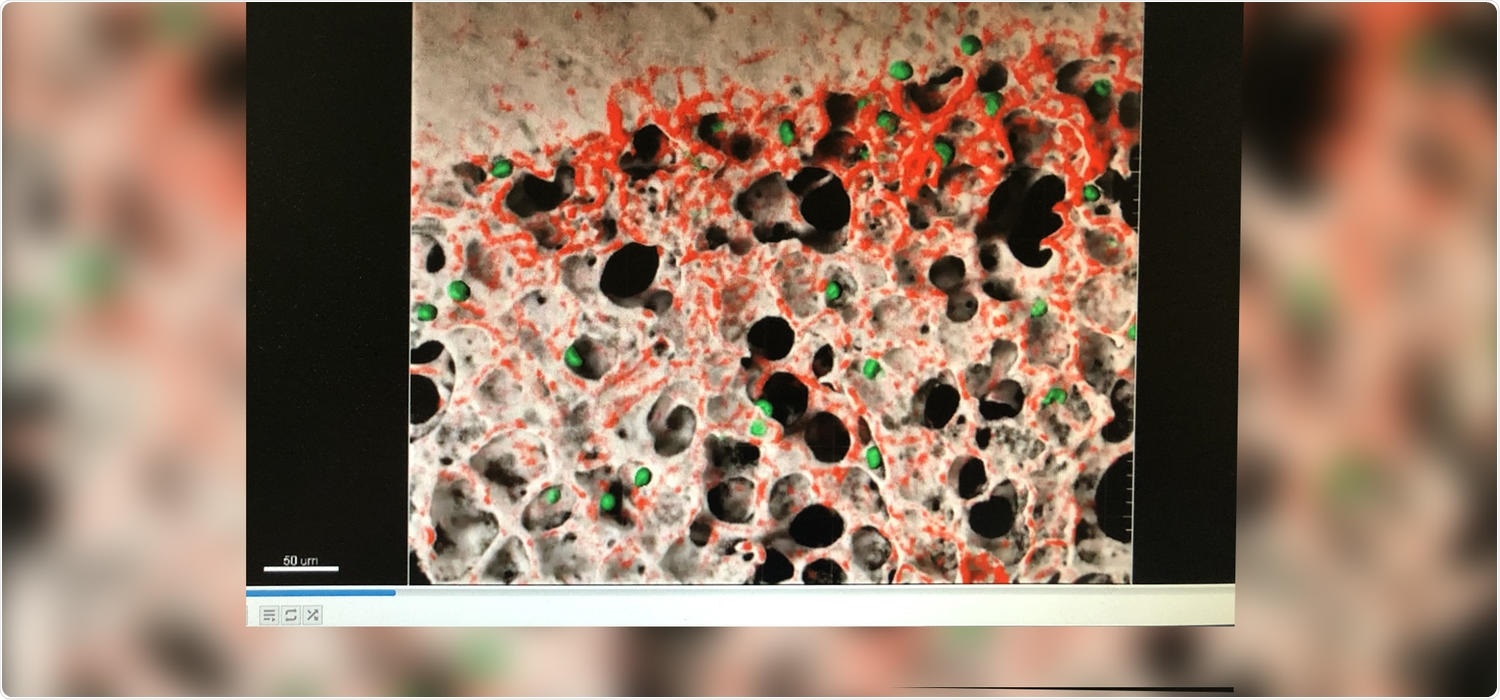A team of researchers from the University of Calgary has identified a new method to capture “live” pictures of immune cells within the lungs.

Image of alveolar spaces inside a lung. The green dots are the immune cells that protect the lung. Image Credit: University of Calgary.
For the first time, the researchers from the Snyder Institute for Chronic Diseases at the Cumming School of Medicine have discovered a way to capture the way the immune system fights bacteria affecting the air sacs, or alveoli, in the lungs of mice, in real-time.
Published in the Cell journal, this latest finding has already given novel insights about the cleaners of the immune systems, known as alveolar macrophages. These macrophages were once believed to be stationary. The team has now observed these macrophages at work, crawling over, around, and between the alveolar spaces looking for viruses and bacteria.
It makes sense that macrophages would move around, but we could only hypothesize this because we couldn’t see them in action. Now we can. There are many more alveoli in the lungs than macrophages, and these tiny cleaners are very efficient at servicing every air sac.”
Dr Paul Kubes, PhD, Principal Investigator, University of Calgary
Making visible the work of macrophages
According to the team, the work performed by the macrophages is quite easy. Individuals can imagine a hotel, where the number of rooms surpasses the number of cleaning staff. The crew uses hallways to clean and maintain the things in order.
Similarly, within the lungs, there is a corridor that offers a space between the alveoli. This space is used by the macrophages to travel across to kill any foreign particles, such as viruses and bacteria, affecting the air sacs.
The researchers have to overcome three major barriers to record live pictures of this immune cell at function. They had to create a means to record an image from air to liquid to air again and had to be able to stabilize the lungs for a long time to obtain a clear picture. Added to this, they have to discover a way to detect and label the macrophages.
This work is a culmination of years of research by scientists around the world. We pulled everything together, combining and refining many imaging techniques. Even six years ago, this would not have been possible.”
Arpan Neupane, Study First Author and PhD Candidate, University of Calgary
New imaging technique reveals important new mystery
The potential to observe macrophages at work has disclosed something else: the researchers watched as the robust cleaners became paralyzed and ceased doing their vital task.
We know when someone is battling a serious infection, especially a respiratory virus like flu or COVID-19; they often develop a secondary infection which can lead to death. With this new imaging technique, we were able to see what’s happening with the macrophages during this process.”
Dr Paul Kubes, PhD, Principal Investigator, University of Calgary
But at a specific point during the fight against infections, it turns out that the efficient cleaners become paralyzed, rendering it simple for new infections to take hold and thrive.
“The next step in our research is to find out why this is happening so that we can develop targeted therapies to kickstart the macrophages into action again,” Dr Kubes concluded.
Source:
Journal reference:
Neupane, A. S., et al. (2020) Patrolling Alveolar Macrophages Conceal Bacteria from the Immune System to Maintain Homeostasis. Cell. doi.org/10.1016/j.cell.2020.08.020.